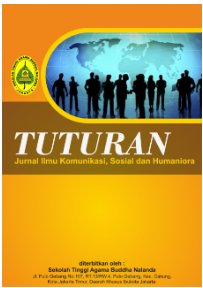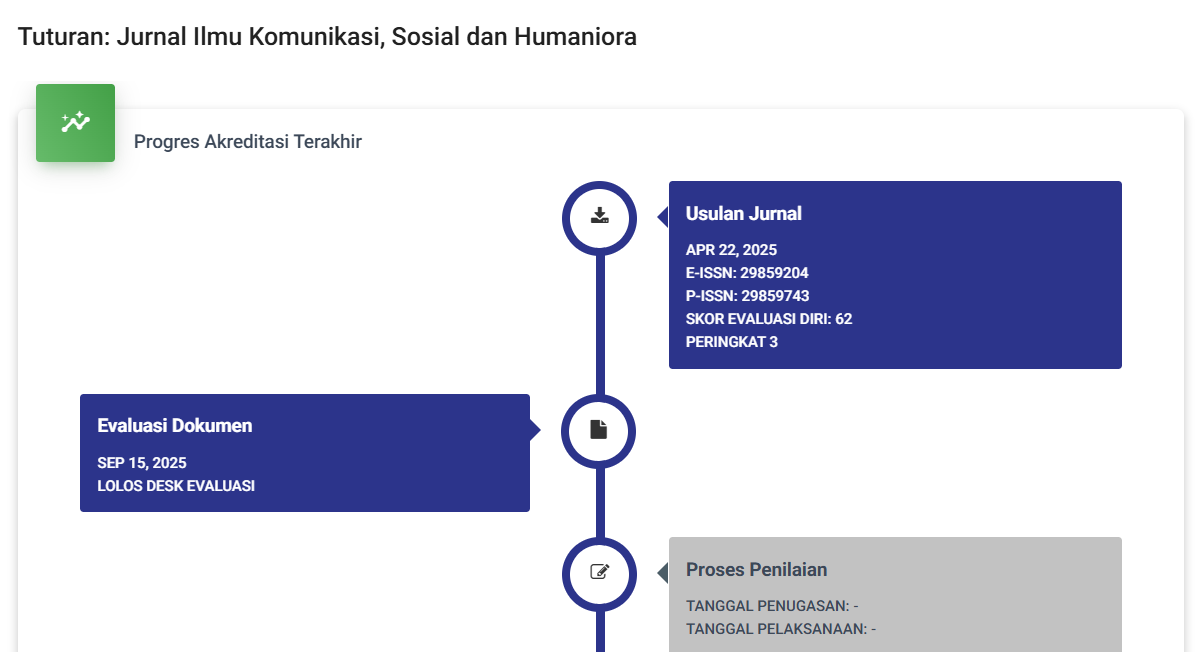Komunikasi Tanpa Nama yang Jujur dan Terbuka : Studi Kasus pada Akun @Komunitasmaunangisaja di Twitter (X)
DOI:
https://doi.org/10.47861/tuturan.v2i4.1236Keywords:
Anonymous Communication, Mental Health, TwitterAbstract
This study analyzes the phenomenon of anonymous communication on the Twitter account (X) @komunitasmaunangisaja and its impact on users' mental health using a transcendental phenomenology approach. Data collection methods include direct observation, content analysis of tweets, and in-depth interviews with account users. Findings indicate that anonymous communication on this account positively impacts mental health by reducing feelings of isolation and enhancing emotional well-being. Users feel more free to express their feelings without fear of judgment, helping to alleviate emotional burdens and gain community support. However, there are also negative impacts, such as dissatisfaction with received responses and the risk of anonymity abuse for negative behavior. The study also reveals that users frequently turn to anonymous communication to cope with stress, anxiety, and depression. This platform provides a space for sharing deep emotions and experiences, facilitating a sense of togetherness and emotional release. Community support helps users feel validated and understood, contributing to overall mental health improvement. This study highlights the importance of such platforms in creating a safe environment for emotional expression, ultimately contributing to better mental well-being, and emphasizes the need for more supportive online communities
References
Boyd, D. M., & Ellison, N. B. (2007). Social network sites: Definition, history, and scholarship. Journal of Computer-Mediated Communication, 13(1), 210–230. https://doi.org/10.1111/j.1083-6101.2007.00393.x
Burke, M., Marlow, C., & Lento, T. (2010). Social network activity and social well-being. In Proceedings of the 2010 Conference on Human Factors in Computing Systems (pp. 1909–1912). https://doi.org/10.1145/1753326.1753613
Budiarto, A. (2019). Pengaruh media sosial terhadap kesehatan mental remaja. Jurnal Psikologi Sosial, 18(2), 135-150.
Christopherson, K. M. (2007). The positive and negative implications of anonymity in internet social interactions: “On the internet, nobody knows you’re a dog.” Computers in Human Behavior, 23(6), 3038–3056. https://doi.org/10.1016/j.chb.2006.09.001
Greening, N. (2019). Phenomenological research methodology. Scientific Research Journal, 7(5). https://doi.org/10.31364/scirj/v7.i5.2019.p0519656
Hardiah, M., Nabawiyah, H., & Pibriyanti, K. (2020). Correlation between knowledge and attitudes to the behavior of personal hygiene food handlers in nutrient department (Study at UNS Hospital Surakarta). Sport and Nutrition Journal, 2(1), 17–24. https://journal.unnes.ac.id/sju/index.php/spnj/
Joinson, A. N. (2001). Self-disclosure in computer-mediated communication: The role of self-awareness and visual anonymity. European Journal of Social Psychology, 31(2), 177–192. https://doi.org/10.1002/ejsp.36
Kuswarno, E. (2009). Fenomenologi konsepsi, pedoman dan contoh penelitian. [Publisher information if available].
KBBI. (2012). Kamus besar bahasa Indonesia ekspresi. https://kbbi.web.id/ekspresi
Malbois, E. (2019). Gabriel Marcel: Intersubjectivity as reciprocal availability. In Phenomenological Approaches to Intersubjectivity and Values (pp. 1–22).
Moran, D. (1990). Introduction to phenomenology. Continuum. https://doi.org/10.1080/10304319009388177
Nabi, R. L., Prestin, A., & So, J. (2013). Facebook friends with (health) benefits? Exploring social network site use and perceptions of social support, stress, and well-being. Cyberpsychology, Behavior, and Social Networking, 16(10), 721–727. https://doi.org/10.1089/cyber.2012.0521
Primack, B. A., Perryman, K. L., Crofford, R. A., & Escobar-Viera, C. G. (2022). Social media as it interfaces with psychosocial development and mental illness in transitional-age youth. Child and Adolescent Psychiatric Clinics of North America, 31(1), 11–30. https://doi.org/10.1016/j.chc.2021.07.007
Smith, J. (2007). Evidence and being: The metaphysics of Husserl’s first four Cartesian meditations by James Logie Wright. [Publisher information if available].
World Health Organization. (2014). Mental health: Strengthening our response (Fact Sheet No. 220). http://www.who.int/mediacentre/factsheets/fs220/en/
Yusria Ningsih, S. A., & M. K. (2016). Kesehatan mental. Revista Brasileira de Linguística Aplicada, 5(1). https://revistas.ufrj.br/index.php/rce/article/download/1659/1508
Downloads
Published
How to Cite
Issue
Section
License
Copyright (c) 2024 TUTURAN: Jurnal Ilmu Komunikasi, Sosial dan Humaniora

This work is licensed under a Creative Commons Attribution 4.0 International License.








